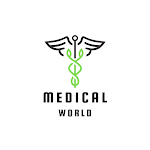Introduction
Mycology is the study of fungi. The name fungi is derived from mikes meaning mushroom. The fungi are eukaryotic organisms and they differ from the bacteria, which are prokaryotic organisms, in many ways.
Structure
The fungi possess rigid cell walls, which possess two characteristic cell structure:
- Chitin
- Ergosterol
Chitin
the fungi consists primarily of chitin, unlike peptidoglycan present in cell wall of bacteria. Hence, fungi are not sensitive to action of penicillin and other antibiotics that inhibit peptidoglycan synthesis.
Chitin is a polysaccharide consisting of long chains of N-acetylglucosamine. In addition to chitin, the fungal cell wall also contains Mannan and other polysaccharides. Of these, beta-glucan is most important, because it is the target of anti fungal drug caspofungin.
Ergosterol
the cell membrane of fungus contains ergosterol, unlike human cell membrane which contains cholesterol. The anti fungal agents, such as amphotericin B, fluconazole, and ketoconazole have selection action on the fungi due to this basic difference in membrane sterols.
Classification of fungi
The fungi can be classified as follows:
Taxonomical Classification
- zygomycetes
- Ascomycetes
- Basidiomycetes
- Deuteromycetes or fungi imperfecti.
Morphological classification
The fungi can be classified into the following four main groups based upon the morphology:
- yeast
- yeast-like form
- molds
- dimorphic fungi
Yeast
yeast are round or oval unicellular fungi that reproduce by asexual budding. On culture medium, such as Sabouraud's dextrose agar(SDA), they produce creamy mucoid colonies.
Example - Cryptococcus neoformus
Yeast-like fungi
hese are the Yeast with pseudo hyphae.
Example- Candida albicans
Molds
molds grow as long filaments called hyphae. They usually measure 2-10 micro meter in width. Some hyphae form transverse walls and hence they are called septate hyphae. Nonseptate hyphae are multi nucleated. The hyphae on their continuous growth from a mat known as mycelium. The part of the mycelium the projects above the surface in culture medium is called aerial mycelium.
Example - Aspergillius, Penicillum, Rhizopus etc.
Dimorphic fungi
many of medically important fungi are dimorphic. They exist as hyphal/ mycelial forms in the soils and in the cultures at 22-25 degree Celsius.
Example - Coccidiodes immitis, Paracoccidiodes brasiliensis, histoplasma capsulatum
Reproduction of fungi
Fungi can reproduce sexually by forming sexual spores and asexually by forming sexual spores.
- Sexual spores
- Asexual spores
Sexual spores
They are of three types -
- Zygospores
- Ascospores
- Basidiospore
Ascospores are formed in a sac called ascus, whereas basidiospores are formed outside on the tip of a pedestal called a basidium. Zygospores are single, large spores with thick wall. The fungi that do not produce sexual spores are called imperfect and are classified as fungi imperfecti.
Asexual spores
hey are produced by mitosis. Fungi reproduce asexually by forming conidia. The shape, color and arrangement of the candia are helpful for identification of the fungi.
Asexual spores can be vegetative or aerial spores as follows:
- Vegetative spores
- Aerial spores
Vegetative spores
- Sporangiospores
- Conidiophores
- Microcondida
- Macrocondida
Sporangiospores
hey are spores formed within a sac called sporangium, which develops at the ends of the hyphae called sporangiospores.
Condidaspores
t is also known as the conidia, are spores found externally on the sides or tips of hyphae. Conidia can be macrocondia or microcondia.
Macroconidia
they are large, aseptate, often multicellular conidia.
Microconidia
they are small and single.
Laboratory diagnosis
It consists of the following terms-
- Direct microscopy
- Culture
- Serological test
- Non-culture methods
- Molecular methods
Direct microscopy
Direct microscopy examination depends on demonstration of characteristic asexual spores, hyphae, or yeast in various clinical specimens by light microscopy. The commonly used clinical specimens are sputum, lung biopsy material, and skin scarping.
The specimen either treated with 10% KOH dissolves tissue material, leaving the alkali-resistant fungi intact.
Culture
Fungal culture is a frequently used method for confirming the diagnosis of fungal infection. SDA is the most commonly used medium for fungal culture. Other media include CHROM, agar, blood agar etc. the low PH of the medium and addition of chloramphenicol and cyclohexamide to the medium inhibit the growth of bacteria in the specimen and thereby facilitate the appearance of slow-growing fungi.
Fungal colony is identified by rapidity of growth, color and morphology of the colony at the observe and pigmentation at the reverse.
Serological test
Demonstration of the antibodies in parent's serum or CSF is useful for diagnosis of fungal infections, especially in systemic fungal infection. A significant rise of antibody titer in a paired sera sample confirms the diagnosis.
Non culture methods
It consists of the following terms-
Antigen detection
it is useful in immunocompromised hosts where antibody detection is not as sensitive. Detection of fungal antigen in serum, CSF, and urine is increasingly used for diagnosis of many fungal infections.
Detection of fungal cell wall markers
Mannan is highly immunogenic components of the candidal cell wall. Mannan antigen detection, therefore, is most widely used method in the diagnosis of candidiasis.
Detection of fungal metabolites
detection of distinctive fungal metabolites is another approach for the diagnosis of fungal infections. Gas liquid chromatography is being used to quantify arabinitol for diagnosis of C.albicans infections.
Anti fungal drugs
It consists of the following terms-
- Amphotericin B
- Nystatin
- Miconazole
- Ketoconazole
- Fluconazole
- Itraconazole


0 Comments